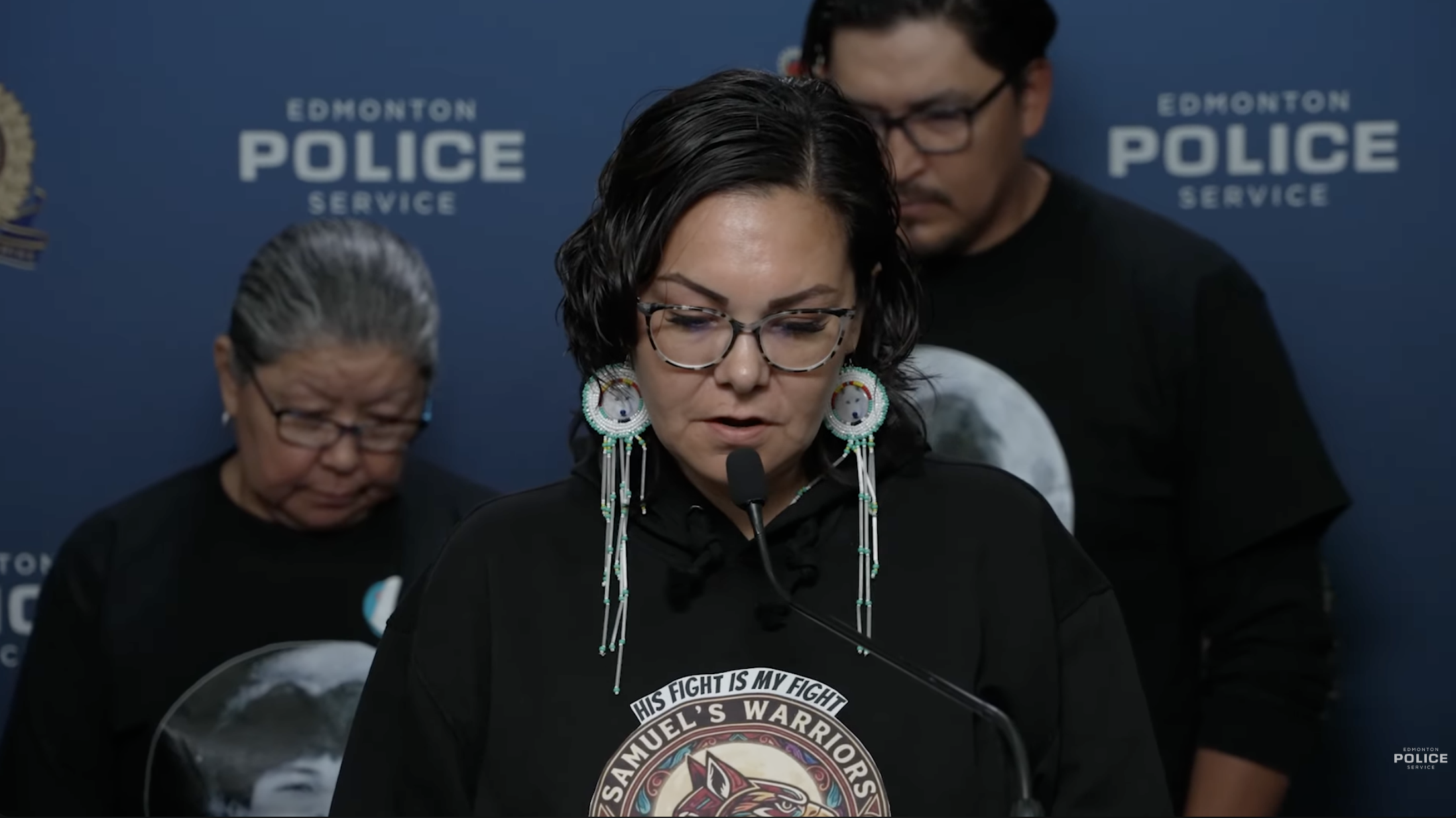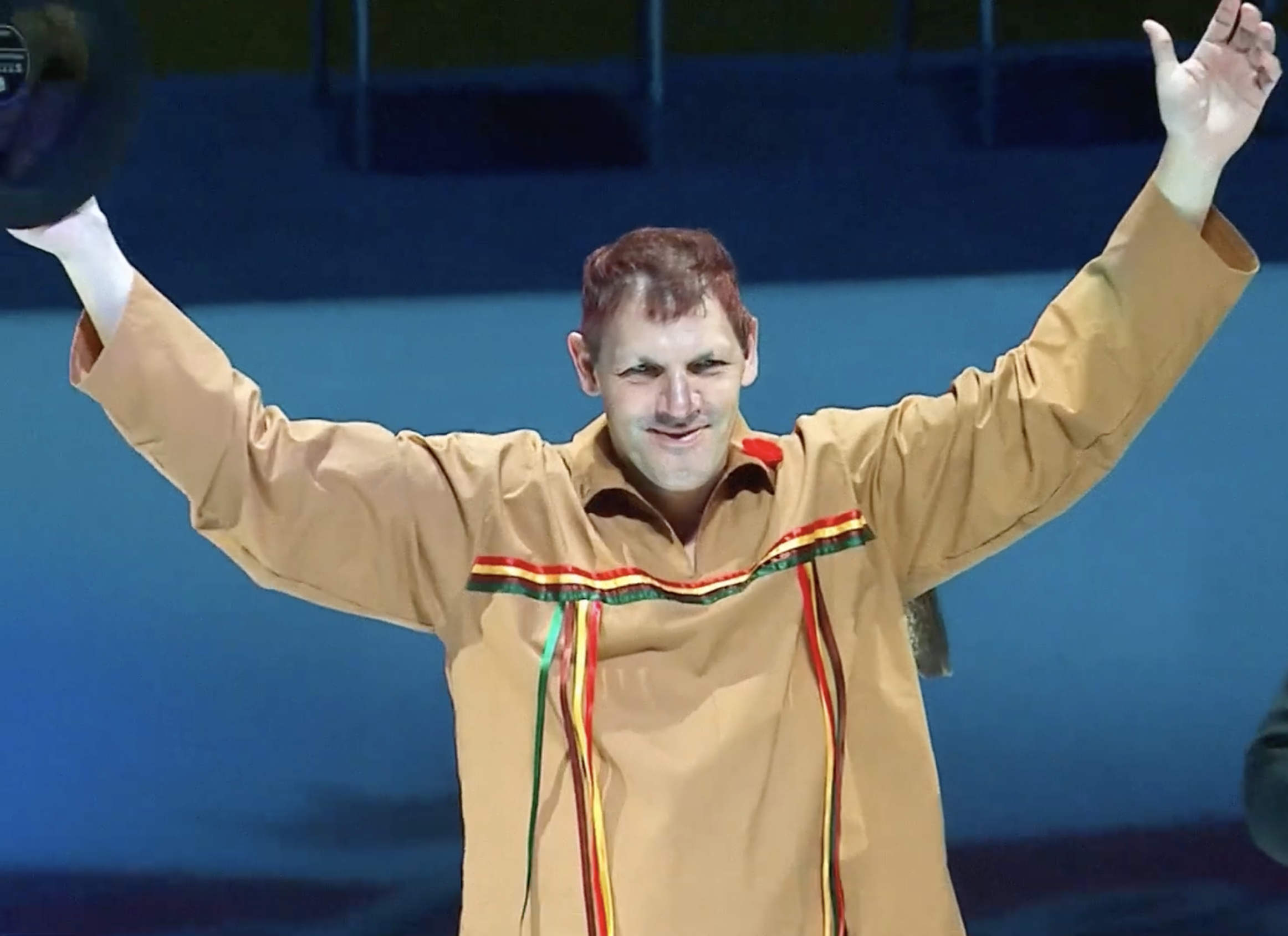Newly-formed coalition wants to save dwindling wild Pacific salmon stocks
The Save our Salmon Coalition says it hopes to be a united front in advocating for the iconic West Coast fish
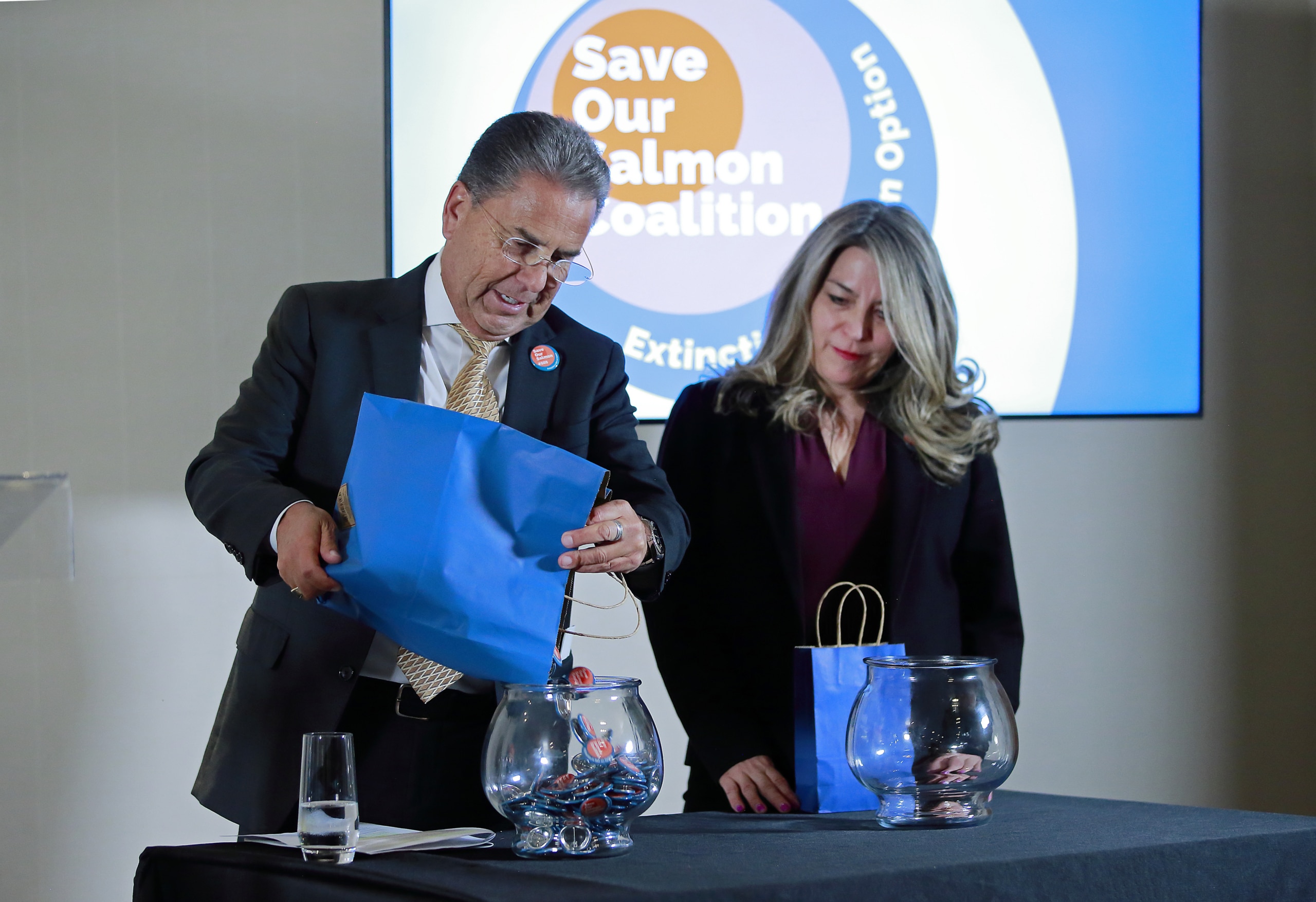
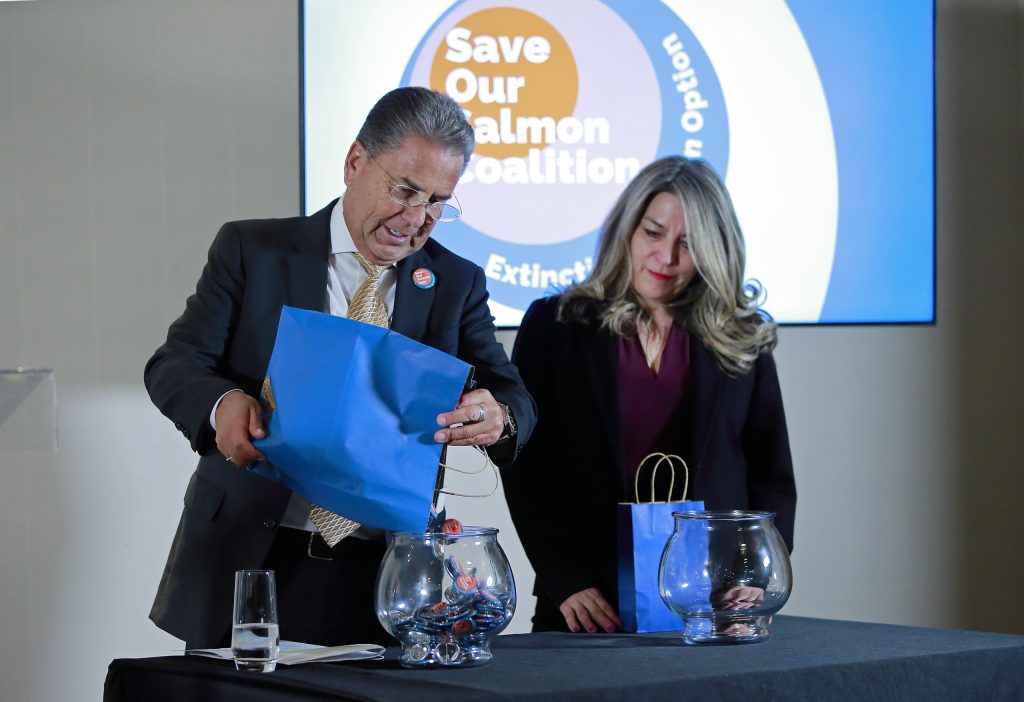
A newly-formed coalition hopes to be a united voice in advocating for wild Pacific salmon — as they say the iconic West Coast fish is in danger of becoming extinct unless serious action is taken to save it.
On Monday a press conference was held to announce the Save Our Salmon Coalition — consisting of leadership from several existing groups including the First Nations Fisheries Council of B.C., the Pacific Salmon Foundation and the Upper Fraser Fisheries Conservation Alliance.
The coalition’s six founding members say while there are many individual efforts around wild Pacific salmon conservation, many are siloed and don’t work in tandem together, which is why they want to form a unified front.
“Salmon in British Columbia today are threatened,” said coalition member Hugh Braker, who is president of the First Nations Fisheries Council and member of Tseshaht First Nation.
“On the west coast of Vancouver Island, for example, the returns of chinook salmon are very low. We need to build those back up. On the Fraser River, there are some returns of sockeye that are very low.”
The coalition estimated that wild Pacific salmon numbers have overall declined by more than 90 per cent since the 1970s — with several of its members reiterating the importance of chinook, sockeye, chum, pink and coho for West Coast Indigenous people.
“You will see salmon depicted on traditional regalia, spoken in people’s names, there are dances for salmon, there are so many aspects of our culture that involve salmon fisheries,” Braker said at the event in Musqueam, Squamish and Tsleil-Waututh territories.
“Our culture will be threatened if salmon are threatened. I cannot imagine the cultures of the West Coast people without salmon.”
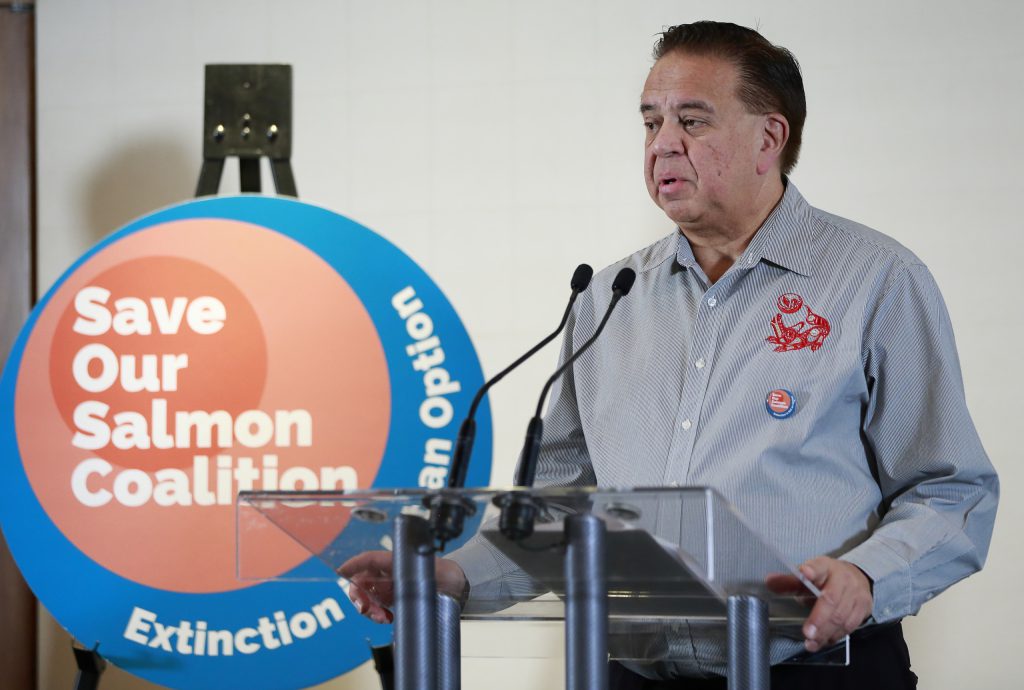
Mike Meneer, the president and CEO of the Pacific Salmon Foundation, said that he’s recognized during 13 years of being involved in salmon conservation that the work must be collaborative.
Because of the complexity of a wild salmon’s life cycle — crossing through various nations and jurisdictions — he said many of the individual efforts haven’t been as effective as they could be.
The coalition, its members hope, will form a collective voice to advocate to various levels of government and other groups, in order to make progress on restoring collapsing wild salmon stocks affected by climate change, decimation of habitat, commercial overfishing and other issues.
Jordan Point, executive director of the First Nations Fisheries Council and a councillor for Musqueam Indian Band, said the first steps for the coalition include engagement and finding ways to collaborate with like-minded groups. They hope to meet with various levels of government as well as companies involved in activities such as logging, mining and oil and gas.
Eventually, they hope to find ways to affect broader changes around conservation and management of wild Pacific salmon.
“The current outlook is extremely dire — waiting and talking is not the option anymore. It’s our mission to work collaboratively to protect and to restore salmon populations in British Columbia,” Point said.
“For too long people have been … trying to point the finger,” he added. “We’re past that now.”
The coalition announcement took place consecutively with the International Marine Protected Areas Congress (IMPAC5) — also taking place this week in downtown “Vancouver.”
In December, during the UN Biodiversity Conference (COP 15) in “Montreal,” the federal government was criticized for its role in the decimation of wild Pacific salmon stocks.
“Many salmon populations in B.C. are headed for extinction and the federal government is essentially managing them to zero,” said Jesse Zeman, executive director of the B.C. Wildlife Federation, in a press release at the time.
“They have multiple levers within reach: salmon farming, non-selective fisheries, habitat restoration and acquisition and pinniped predation, and we need to pull on all these levers at once.”
The same release classified many chinook, sockeye and other salmon and steelhead runs as being “in historic peril.”
“Unsustainable fishing practices aimed at harvesting healthy runs indiscriminately scoop up members of salmon and steelhead runs that are endangered, threatened or functionally extinct,” it stated.
“The number of steelhead returning to the Thompson and Chilcotin watersheds is the lowest ever recorded, according to a spawning population estimate by the provincial government.”
Gord Sterritt, the executive director of the Upper Fraser Fisheries Conservation Alliance and member of the Gitxsan Nation, said Monday that he has witnessed salmon stocks declining within his lifetime — once seeing thousands spawning in a short stretch of stream to now seeing only a few.
“Growing up I listened to stories from my grandfather, aunts and uncles about walking across the backs of salmon. There were so many,” said Sterritt.
“My goal is for my grandchildren, and future generations, to see with their own eyes the marvel of the spawning cycle of salmon and not having to read about it in books.”

Author
Latest Stories
-
‘Bring her home’: How Buffalo Woman was identified as Ashlee Shingoose
The Anishininew mother as been missing since 2022 — now, her family is one step closer to bringing her home as the Province of Manitoba vows to search for her
-
Samuel Bird’s remains found outside ‘Edmonton,’ man charged with murder
Officers say Bryan Farrell, 38, has been charged with second-degree murder and interfering with a body in relation to the teen’s death
-
Book remembers ‘fighting spirit’ of Gino Odjick, hockey’s ‘Algonquin Assassin’
Biography of late Kitigan Zibi Anishinabeg left winger explores Odjick’s legacy as enforcer in the rink — and Youth role model off the ice



